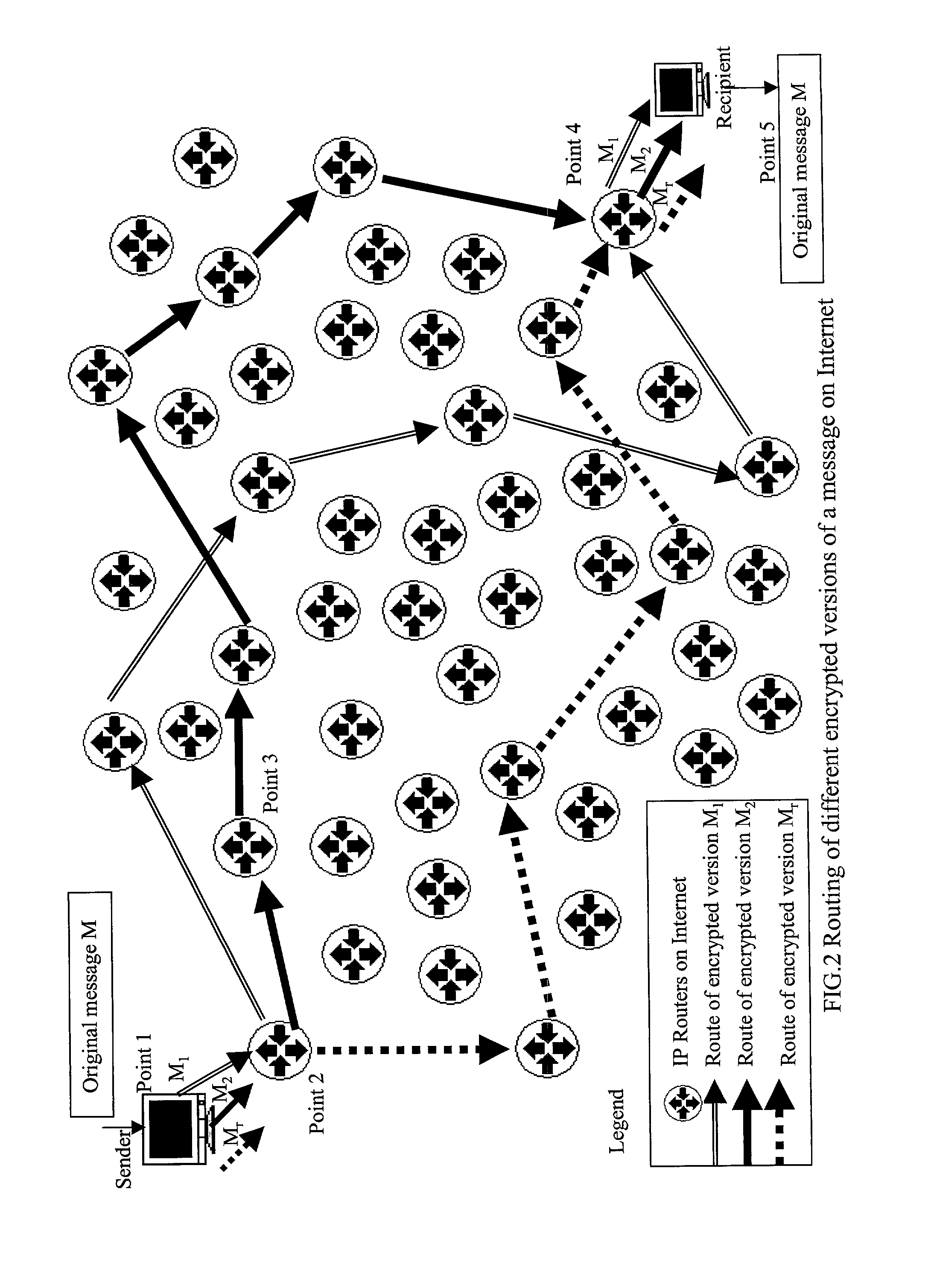Absolute public key cryptographic system and method surviving private-key compromise with other advantages
a cryptographic system and private key technology, applied in the field of absolute public key cryptographic system and method surviving private key compromise with other advantages, can solve the problems of private key algorithm use, hacker misuse, and unauthorized sniffer can be extremely dangerous to the security of the network, and achieve the effect of less powerful processors
- Summary
- Abstract
- Description
- Claims
- Application Information
AI Technical Summary
Benefits of technology
Problems solved by technology
Method used
Image
Examples
Embodiment Construction
[0025]Absolute Public-key Cryptography is a new technique, which overcomes the shortcomings of public key cryptography. It survives private key compromise and protects the business from undergoing bankrupt following an internal breach of trust in maintaining the confidentiality of the private key. While surviving private key compromise, it provides an extra layer of security over Internet communications when the private key is kept secret.
[0026]Another advantage of Absolute Public-key Cryptography is it provides two-way communication security. When Alice sends a message encrypted by her private key to Bob, only Bob can decrypt it with Alice's public key. Chris and David, who share Alice's public key with Bob can not decrypt the message. Public key cryptography does not support this private-to-public side communication security.
[0027]In Absolute Public-key Cryptography, both public key and private key contain two or more components. Data is encrypted into as many cipher versions as t...
PUM
 Login to View More
Login to View More Abstract
Description
Claims
Application Information
 Login to View More
Login to View More - R&D
- Intellectual Property
- Life Sciences
- Materials
- Tech Scout
- Unparalleled Data Quality
- Higher Quality Content
- 60% Fewer Hallucinations
Browse by: Latest US Patents, China's latest patents, Technical Efficacy Thesaurus, Application Domain, Technology Topic, Popular Technical Reports.
© 2025 PatSnap. All rights reserved.Legal|Privacy policy|Modern Slavery Act Transparency Statement|Sitemap|About US| Contact US: help@patsnap.com



